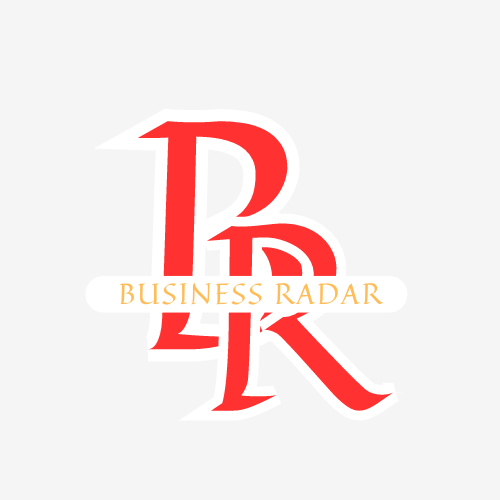Kenya’s diverse ecosystems, from the acacia woodlands of West Pokot and Kitui to the floral-rich highlands of Nyandarua, make it a prime location for honey production. The country produces up to 100,000 metric tonnes of honey annually, though it currently utilizes only 20% of its capacity. With global demand for organic and ethically sourced honey on the rise, Kenyan exporters can target lucrative markets in the European Union (EU), the United States, the Middle East, and neighboring African countries under trade agreements like the African Growth and Opportunity Act (AGOA), the East African Community (EAC), and the Common Market for Eastern and Southern Africa (COMESA).
Exporting honey offers significant economic benefits:
- High Profit Margins: Honey is five times more expensive than oil, fetching $6-$9 per kilo in Kenya and up to $15-$20 in markets like the UAE.
- Job Creation: The honey industry supports livelihoods for smallholder beekeepers and creates employment in processing and logistics.
- Market Access: Trade agreements provide duty-free or preferential access to major markets, reducing trade barriers.
- Sustainability: Beekeeping promotes environmentally friendly practices and supports biodiversity through pollination.
However, exporting honey requires strict adherence to local and international regulations, quality standards, and logistical planning. Below, we outline the comprehensive requirements and procedures to succeed in this venture.
Step-by-Step Guide to Exporting Honey from Kenya
1. Business Setup and Legal Documentation
To export honey, you must establish a legally compliant business entity and secure the necessary permits. Here’s how to get started:
- Register Your Company: Register your business with the Registrar of Companies at the Attorney General’s office to obtain a Certificate of Incorporation. This establishes your business as a legal entity.
- Obtain a KRA PIN and Tax Compliance Certificate: Apply for an individual or company Personal Identification Number (PIN) from the Kenya Revenue Authority (KRA). A tax compliance certificate is mandatory for all export activities.
- Secure a Single Business Permit: Obtain a single business permit from your county government for your honey processing facility.
- Register with the Kenya Trade Network Agency (KenTrade): Enroll with KenTrade to use the Kenya National TradeNet System (KESWS) for processing permits and export declarations.
- Apply for an Export License: Obtain an export license from the Agriculture and Food Authority (AFA) under the Directorate of Apiculture. This license authorizes the export of honey and other bee products.
2. Honey Processing Establishment Requirements
Setting up a compliant honey processing facility is critical to meet both Kenyan and international standards. The following guidelines, based on Kenya’s honey export and processing regulations, ensure your facility is export-ready:
Location and Environmental Compliance
- Choose a location free from objectionable odors, smoke, dust, or other contaminants.
- Ensure the facility is separate from buildings used for industrial, commercial, agricultural, or residential purposes.
- Submit an Environmental Impact Assessment (EIA) report to the National Environment Management Authority (NEMA) before construction, as required by Kenyan environmental laws.
- Obtain approval from the Director of Livestock Production, Ministry of Agriculture, Livestock, and Fisheries.
Structural Layout
The design and construction of the facility must prevent contamination and ensure hygiene:
- Reception Area: A dedicated room for receiving, weighing, and inspecting incoming honey.
- Processing Hall: Equipped with facilities for processing honey, such as filtering and pasteurization equipment.
- Storage Room: A dry, adequately sized storeroom for finished products.
- Materials: Use impervious, easy-to-clean materials resistant to wear and corrosion (e.g., stainless steel, food-grade plastic, or glass).
- Floors and Walls: Construct floors with dense, acid-resistant, waterproof concrete or terrazzo with a fine finish. Walls should be smooth, flat, and made of concrete, with junctions designed for easy cleaning.
- Drainage: Ensure floors in wet operation areas are well-drained to prevent water accumulation.
- Ceilings: Design ceilings to be smooth, high, and easy to clean.
- Rodent-Proofing: Ensure the building is rodent-proof, with immediate repairs for any structural damage.
Process Equipment
- Position equipment for easy cleaning access.
- Use tubular frameworks to minimize debris accumulation and reduce microbial growth.
- Provide an ample supply of hot water (at least 82°C) for cleaning equipment and floors.
- Ensure all containers and utensils are made of stainless steel, food-grade plastic, or glass to resist honey corrosion.
- Implement a batch identification system for traceability, including delivery records, date coding, and source details (Kenyan or imported honey).
Personnel Standards
- Conduct pre-employment and biannual medical checks to ensure employees are free from communicable diseases, such as intestinal disorders or open wounds.
- Require employees handling honey to wear washable protective clothing, including head coverings and boots.
- Provide handwashing facilities with non-perfumed bacterial soap and single-use towels. Avoid hand-operated taps and ceramic sinks to reduce contamination risks.
- Ensure employees wash hands after using toilet facilities before handling honey or equipment.
- Provide adequate, well-lit, and ventilated toilet and changing facilities, separated from production areas.
3. Quality Assurance and Certifications
Quality is paramount in the international honey market. Exporters must comply with Kenyan and destination country standards to ensure product safety and market acceptance.
Kenyan Quality Standards
- Kenya Bureau of Standards (KEBS) Certification: Obtain KEBS certification to verify that your honey meets national quality standards. This includes testing for purity, moisture content, and absence of contaminants like insect debris or sand.
- Phytosanitary Certificate: Issued by the Kenya Plant Health Inspectorate Service (KEPHIS), this certificate confirms that honey is free from pests, diseases, and harmful substances. It is required for each consignment.
- Health Certificate: Obtain a public health export certificate from the Ministry of Health, confirming the honey is safe for human consumption.
- ISO 22000 and HACCP: Implement ISO 22000 for food safety management and Hazard Analysis and Critical Control Points (HACCP) systems to meet EU and U.S. market requirements.
International Quality Standards
- EU Market: Comply with EU Directive 2001/110/EC on honey composition and General Food Law Regulation (EC) 178/2002. Ensure honey is free from insecticides, antibiotics, and heavy metals within specified residue limits.
- U.S. Market: Register with the United States Food and Drug Administration (USFDA) and comply with the Food Safety Modernization Act (FSMA). Conduct chemical analysis for pesticides, heavy metals, and antibiotics at accredited laboratories (e.g., KEBS, KEPHIS, or the University of Nairobi).
- Other Markets: Obtain a Generalized System of Preferences (GSP) certificate from KRA for exports to non-EU countries like Australia, Canada, Japan, or Switzerland.
Quality Assurance Department
- Establish a quality assurance department with trained staff to monitor compliance with standards.
- Grant the department authority to accept or reject honey for processing and packaging.
- Conduct regular chemical, physical, and microbiological analyses at accredited laboratories.
- Document all quality checks and corrective actions, retaining records for the legally required period.
4. Packaging and Labeling Requirements
Proper packaging and labeling are essential to meet international standards and ensure product integrity during transit.
- Packaging: Use clean, dry containers made of stainless steel, food-grade plastic, or glass to prevent contamination. Containers must be traceable to a coded source or supplier.
- Labeling: Include the following on packaging and accompanying documents:
- Product name and lot identification
- Country of origin (Kenya)
- Name and registration number of the honey processing establishment or collecting group
- Producer, processor, or packer address
- Expiry date
- Floral or plant source (e.g., acacia honey) and method of removal (e.g., extracted or comb honey), if applicable
- Residue Monitoring: Subject honey to periodic residue testing for pesticides, antibiotics, and heavy metals, with costs borne by the exporter or processor.
5. Export Documentation and Procedures
To clear customs and meet destination country requirements, prepare a comprehensive documentation package for each shipment:
- Certificate of Origin: Obtain from KRA for specific trade agreements (EAC, COMESA, AGOA, GSP, or EU). This confirms the honey originates from Kenya and qualifies for preferential tariffs.
- Export Declaration Form: File with KRA to comply with customs regulations.
- Phytosanitary Certificate: Issued by KEPHIS for each consignment.
- Health Certificate: Issued by the Ministry of Health.
- Analysis Certificate: Obtain from accredited laboratories (KEBS, KEPHIS, or University of Nairobi) to verify compliance with pesticide, antibiotic, and heavy metal limits.
- Insurance Certificate: Secure coverage for potential damage or loss during shipment.
- Packing List and Commercial Invoice: Include accurate HS codes, lot numbers, and production dates.
- Buyer-Specific Requirements: Check with the importing country for additional permits or standards.
6. Logistics and Customs Clearance
Efficient logistics management is key to successful exports:
- Partner with Customs Brokers: Engage experienced brokers specializing in food or agricultural exports to streamline customs processes and minimize delays.
- Pre-Export Inspection: Arrange sampling and testing with relevant authorities to ensure compliance with Kenyan and destination country standards.
- Freight Forwarding: Choose reliable freight forwarders for air or sea transport, depending on the destination and perishability. Air freight is common for high-value markets like the EU due to honey’s stability.
- Customs Checks: Be prepared for inspections or sampling at destination ports. Maintain communication with importers and freight forwarders to address any issues.
7. Leveraging Trade Agreements
Kenya’s participation in trade agreements enhances market access:
- EAC and COMESA: Offer preferential tariff rates for exports to member states, requiring a minimum of 35% value addition for COMESA eligibility.
- AGOA: Provides duty-free access to the U.S. market for qualifying honey exports.
- GSP: Grants preferential duty treatment in markets like Australia, Canada, Japan, and the EU.
- EU-Kenya EPA: Facilitates duty-free and quota-free access to the EU for horticultural and agricultural products, including honey.
Contact the Kenya Export Promotion and Branding Agency (KEPROBA) or the Ministry of Trade for guidance on accessing these markets.
8. Market Research and Entry Strategies
To succeed in international markets, conduct thorough market research:
- Identify Target Markets: Focus on high-demand regions like the EU, U.S., UAE, and Saudi Arabia, where premium and organic honey is valued.
- Understand Consumer Preferences: Tailor products to meet specific market needs, such as organic certification or unique floral profiles (e.g., multiflora or acacia honey).
- Develop a Brand: Register a brand name with the Kenya Industrial Property Institute (KIPI) to enhance marketability.
- Create a Product Catalogue: Include high-resolution photos, product details, and pricing, and share via websites, USB drives, or email.
- Build Partnerships: Connect with commercial attachés at foreign embassies or established exporters for trade opportunities.
9. Challenges and Solutions
Exporting honey from Kenya comes with challenges, but strategic solutions can ensure success:
- Climate and Pests: Climate change and pests like the Varroa mite reduce honey yields. Invest in modern beekeeping techniques and pest control measures.
- Bureaucracy: Export procedures can be complex. Partner with experienced customs brokers and use the KenTrade platform to streamline processes.
- Quality Compliance: Strict international standards require investment in quality assurance systems. Train staff and use accredited laboratories for testing.
- Logistics Costs: High transport costs, especially for air freight, can erode profits. Optimize packaging and explore sea freight for non-perishable shipments.
Exporting honey from Kenya offers immense opportunities for entrepreneurs and beekeepers to tap into a growing global market. By adhering to stringent quality standards, securing necessary certifications, and leveraging trade agreements like AGOA, EAC, and COMESA, exporters can access lucrative markets in the EU, U.S., and beyond. Invest in a compliant processing facility, robust quality assurance systems, and efficient logistics to ensure success. With careful planning and execution, Kenya’s honey industry can sweeten the economy while empowering local communities.
For more information, contact:
- Kenya Revenue Authority (KRA): www.kra.go.ke
- Kenya Plant Health Inspectorate Service (KEPHIS): www.kephis.org
- Kenya Bureau of Standards (KEBS): www.kebs.org
- Kenya Export Promotion and Branding Agency (KEPROBA): www.brand.ke
- USFDA (for U.S. exports): www.fda.gov





